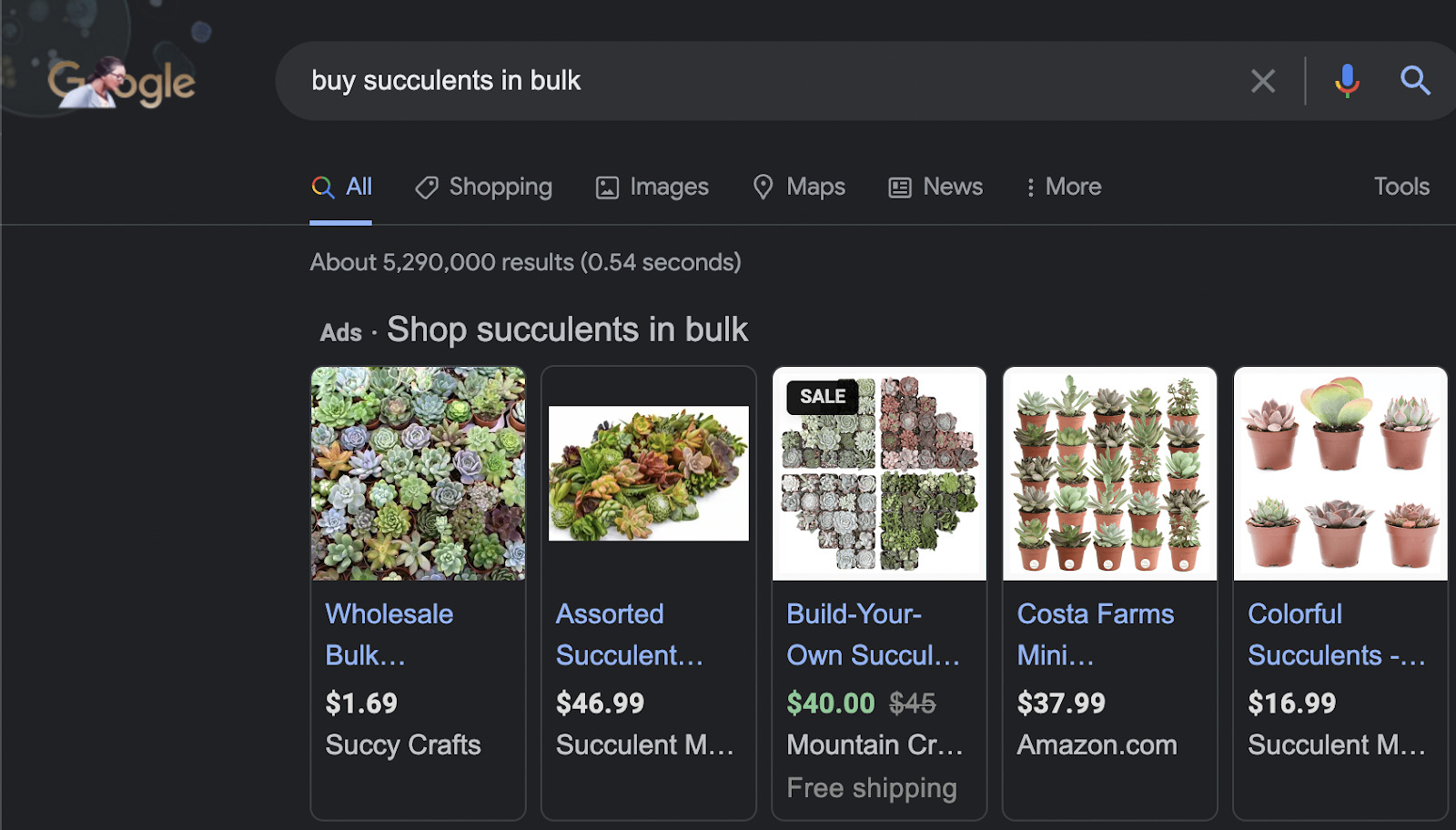Search Results
What are Search Results?
Search results are a list of webpages from a search engine that appear in response to a particular search query. A search engine results page (SERP) may also include paid ad listings, images, videos, and other features helpful to the user.
Why are search results important?
Search results are important for businesses and blogs. If a business/blog appears at the top of the SERP by ranking for a highly searched keyword, its website will likely get a lot of traffic.
For example, if you’ve built a blog about succulents, you’ll want to rank for keywords related to this topic that can get you organic traffic from Google. To find valuable keywords to target, we can use Ahrefs’ Keywords Explorer and uncover query ideas related to the topic of succulents.
In this case, I searched for “succulents.” Then I clicked the “Related terms” function in the sidebar to get a handy list of long-tail keywords related to the word “succulent.” From this list, I quickly found “how to care for your succulents,” a great how-to keyword with an estimated U.S. search volume of 14K (18K globally).

What types of search results are there?
There are two broad types of search results in Google.
Organic results
Organic results are unpaid listings on the SERP. Also referred to as natural search, organic results are determined by the search algorithm and are based on relevancy and quality for searchers.
A typical organic search result will include the website URL, SEO title, and meta description, as seen below in the organic results for the keyword “buy succulents in bulk”:

Organic results are determined by a few hundred ranking factors in the search algorithm. Here are some key factors:
- Content quality
- On-page optimization
- Backlinks
- Internal linking
Keep in mind that you can’t simply pay Google to appear in the organic results. Because of this fact, your blog or business can gain a lot of credibility by appearing at the top of the search results for important queries. This is a signal to users that you’re an expert in your industry or on a particular topic.
Paid results
Paid results are ad placements bought by advertisers to appear on the SERP with organic listings. Paid search results are usually found at the top and bottom of the SERPs on both desktop and mobile.
If we return to our search query, “buy succulents in bulk,” you can see a Google Shopping Ad carousel right at the top. This is a list that appears when the user is searching for a certain product to purchase. It includes information like product name, product photo, price, and merchant.

For a typical text ad, you can create your own custom headline, description, and landing page URL. Slightly down the page below the shopping ad carousel, we see the following paid listing for the keyword “buy succulents in bulk”:

So what determines which paid results will appear? The main factors include:
- The amount you bid per click.
- The competition for your query.
- The quality score for your landing page.
Do note you have to keep paying for the ads to appear in the SERPs. If you decide to stop, you lose all of the traffic from your paid ads.
Best practices for appearing in search results
There are a few best practices you should implement if you want to improve your chances of appearing at the top of the search results.
1. Match search intent
Search intent is the purpose behind an online search query. Most queries can be categorized by a few types of intent:
- Informational intent refers to a user who wants to find an answer to their question or learn about a topic. It mainly applies to the vast majority of online searches.
- Transactional intent refers to a user who’s looking to make an online purchase. It’s sometimes referred to as commercial intent.
- Navigational intent refers to a user looking for a specific brand, company, website, or person. It’s also known as a branded keyword.
Search intent is obvious for some keywords. For example, “buy iphone” clearly indicates a searcher is in buying mode.
For other keywords, it’s not so obvious. That’s why it’s helpful to look at the top-ranking search results to gauge the most likely search intent.
That brings us to a key topic: the “three Cs of search intent.”
Simply put, these three Cs will help you define the search intent behind any query using the best possible source: Google itself.
The three Cs are:
- Content type – The overall type of content in the search result (such as blog post, product page, or landing page).
- Content format –The overall format of the top-ranking pages in the SERP (such as listicles or reviews).
- Content angle – The overall selling point of the content (what helps your page stand out from other results).
Learn more about the three Cs and types of searches in our guide on search intent.
2. Get backlinks
Backlinks are links from other websites pointing back to your website.
They remain a top-ranking factor in Google. If you get a number of high-quality backlinks for your site, your content has a better chance of appearing at the top of the SERP.
There are many ways to do link building. But here’s one of the easiest, which you can do right here in Ahrefs.
First, enter one of your competitors’ sites into Ahrefs’ Site Explorer. Then go to the Backlinks report and search for the word “resources” in the URLs under the “Referring page” column. If the competitors have any links from resource pages, those URLs are great opportunities for you to go after.

3. Add internal links
Internal links are links between internal pages on your website.
Internal links matter because they transfer PageRank from one page to another. This allows you to give key pages a targeted lift in the search results.
In addition, your chosen anchor text can give Google more context about the topic of a page, helping the page appear higher in the search results for the query you want to rank for.
The easiest way to add internal links is to include them wherever relevant when you’re publishing new content.
One way to find internal link opportunities you may have missed is to use the Link opportunities report in Ahrefs’ Site Audit (which you can use for free by signing up for Ahrefs Webmaster Tools).
For example, I manage the ClickBank blog and website. A Link opportunities report for ClickBank shows thousands of potential places to add internal links without even having to change the existing anchor text.

One suggestion is to add an internal link to the phrase “finding affiliates,” which naturally appears within an article titled “The Secret Weapon of Successful Online Entrepreneurs.”
You’ll need to use your best judgment when picking where to add internal links. Be sure to consider which of your pages will benefit most from a boost in PageRank. Also, do ensure those pages have enough relevance to the original page so that they’ll be of value to the user.